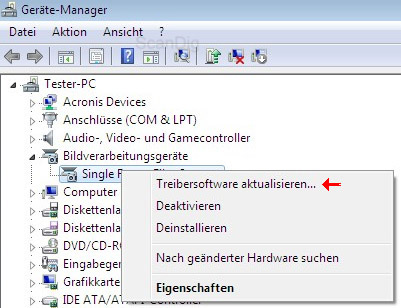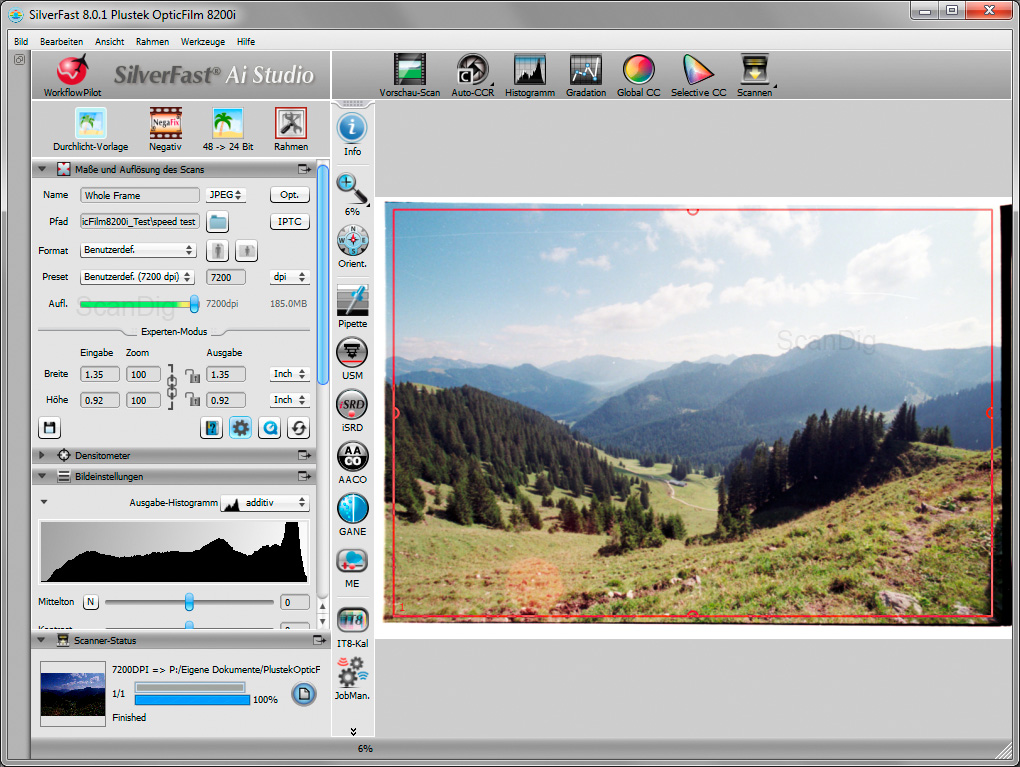Silverfast Se Plus 8 Rapidshare Download
11.10.2019 admin
. Pros Offers more control over scans than the drivers that come with most scanners. Color calibration.
Hardware-based dust and scratch removal. Special tools for Kodachrome film. Cons Needs a separate version for each scanner model it supports. Bottom Line The SilverFast Ai Studio 8 scan utility is pricey and has a steep learning curve, but it's an excellent tool for anyone who wants to get the best possible output quality from whatever scanner they have.
The.vampire.diaries.s01e16.hdtv.xvid notv legenda br. Silverfast se plus free download - SilverFast DC SE, SilverFast SE Canon FS4000US, SilverFast SE NIKON LS2000 (Mac), and many more programs.
In many ways, LaserSoft Imaging's SilverFast Ai Studio 8 ($299 to $449, depending on the scanner model) is the Photoshop of scan utilities. I mean that in both a good and a bad way. The bad part is that although it's not hard to muddle through with SilverFast without knowing how to use it well, it's hard to master.

The good part is that it's among the best known, most widely used, and most capable programs in its category for a good reason: Once you learn how to use it, it will give you excellent results. SilverFast lets you wring the best possible photo scan quality out of whatever photo scanner you use it with. Shades of Silver LaserSoft Imaging sells an assortment of SilverFast versions, including some variations on its older version 6, and three levels of SilverFast 8, which is what I review here.
All three of the SilverFast 8 variations come in different versions for different scanner models, so you have to get the right version for the scanner you have. All three also use the same program file for any one scanner, with the license key unlocking the appropriate features for the program level. That makes upgrading easy, since you only need to enter a new license key.
Silverfast Se Plus 8 Software
The least expensive variation, with the fewest features, is SilverFast SE 8 ($49). Even with this version, you get an impressive set of sophisticated tools, including controls for manual and automatic color correction, sharpening the image, and dust and scratch removal, complete with support for a hardware-based option using an infrared scan for models that offers it. The program can also save scans in LaserSoft Imaging's 48HDR format, which retains all the information in the standard scan with visible light, and 64-bit HDRI format, which adds the information from the IR scan.
Silverfast 8 Download
Either format lets you post-process the image in LaserSoft Imaging SilverFast HDR, a companion program for SilverFast (which I did not look at as part of this review). The next step up is SilverFast SE Plus ($119, but $79 to upgrade from the standalone SE level and $99 to upgrade from the bundled SE version). Among the additional features in SE Plus is an option for scanning Kodachrome slides, which tend to show a bluish tint in scans, and a multi-exposure option, which is potentially useful for scanning transparencies (i.e., slides, film strips, and negatives). If you turn on the multi-exposure tool, SilverFast will take the scanner through two scans with different exposures and combine the results in one image. The result effectively increases the scanner's dynamic range (meaning how many shades of gray it can see), so the scan will show more detail based on shading. This is not particularly useful for scanning photographic prints, but it can make a big difference with film, which has a much greater dynamic range.

The second scan adds significant time for scanning each image, however, and it doesn't always give you better quality. The most notable addition in SilverFast is a color-calibration feature using a standard IT8 calibration target, which you'll have to buy separately. Calibrating is supremely easy. Put the target in the scanner, click on the color calibration tool, and wait a moment for it to scan and calibrate. That's all it takes to get scans with better color fidelity.
Using the Program As useful as all of the SilverFast tools are, expect to invest a lot of time experimenting with each one to fully understand the effect it has on the scan. To make things easier, you can see the effect on the preview scan when you change settings and easily undo it if necessary. The program also includes a Wizard of sorts,which is meant to walk you through the steps for different kinds of scans. But learning how to use even the Wizard properly takes time and effort. One potential issue to consider before getting SilverFast is that you not only need a scanner that SilverFast supports, you need to get a different version for every scanner. If you replace your scanner with a new one, you'll have to get a new version of SilverFast as well. (You can find a list of supported scanners on the website.) A few scanners already come with SilverFast, either as their only scan utility, as with the, or as an alternative to the manufacturer's own utility, as with the.
If you're choosing between two similarly priced models, and one comes with the version of SilverFast that you want, that might be enough reason to pick one model over the other. That said, note that just because a scanner comes with SilverFast doesn't necessarily mean the two work well together. When the Plustek OpticFilm 120 first came out, for example, you couldn't conveniently scan, say, the third frame in a strip of film (a problem that has since been fixed).
The moral here is that before buying the program, it's well worth downloading the Demo version from SilverFast's website (by choosing the Demo button on the home page), to check how well it works with the scanner you want to use it with. The Demo software is actually a fully functional version of SilverFast Ai Studio, minus the color calibration feature. The only other limitation is that it watermarks the scans, so you can't really use them.

If you decide to buy the program, you can simply enter the license key to unlock it, without having to reinstall anything. If you're happy with the scan quality you're getting from the software that came with your scanner, there's no reason to consider getting SilverFast. If you want improved quality, but are concerned about having to buy additional copies for additional scanners, take a close look at VueScan, which is less expensive to begin with and which you can buy once and use on all the models it supports.
That said, if you're not concerned about the possibility of having to buy additional copies, SilverFast Ai Studio 8 is an attractive choice, particularly if you want to go a step further and use it in combination with SilverFast HDR to post-process the scans for the best possible results. Depending on the scanner, either SilverFast or VueScan may be the better choice. But for any model that SilverFast works with (but doesn't ship with), it's virtually guaranteed to give you better-quality scans than the software the manufacturer includes with the scanner. Lead Analyst Printers, Scanners & Projectors M. David Stone is an award-winning freelance writer and computer industry consultant.
Although a confirmed generalist, with writing credits on subjects as varied as ape language experiments, politics, quantum physics, and an overview of a top company in the gaming industry. David is also an expert in imaging technologies (including printers, monitors, large-screen displays, projectors, scanners, and digital cameras), storage (both magnetic and optical), and word processing. He is a recognized expert on printers, well known within the industry, and has been a judge for the Hewlett-Packard HP Invent Awards. His more than 30 years of experience in writing about science and technology includes a more than 25-year concentration on PC hardware and software. He has a proven track record of making technical issues easy for non-technical readers to understand, while holding the interest of more knowledgeable readers.
Writing credits include nine computer-related books, major contributions to four others, and more than 4,000 articles in national and worldwide computer and general interest publications. His books include The Underground Guide to Color Printers (Addison-Wesley) Troubleshooting Your PC, (Microsoft Press), and Faster, Smarter Digital Photography (Microsoft Press).
Much of David's writing has been for PC Magazine and PCMag.com. He has been a frequent contributor since 1983, a Contributing Editor since 1987, and Lead Analyst since 2004. His work has also appeared in a number of other print and online magazines and newspapers, including Wired; Computer Shopper, eWeek, and Science Digest, where he was Computers Editor. He also wrote a column for the Newark Star Ledger for several years. Non-computer-related work runs the gamut from the Project Data Book for NASA's Upper Atmosphere Research Satellite (written for GE's Astro-Space Division) to occasional science fiction short stories. (His work has appeared in Analog.) After being born in and spending most of his life in or near New York City, David moved to Pennsylvania several years ago, but still considers himself a New Yorker, and refuses to give up the New York area code on his cell phone.